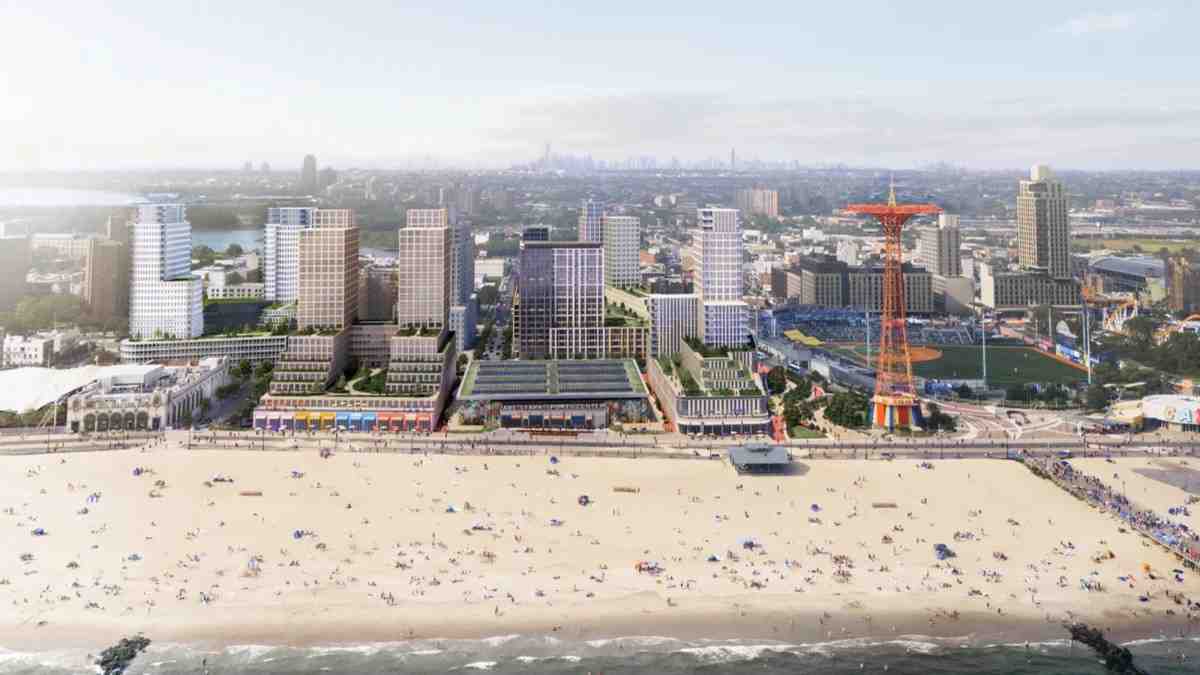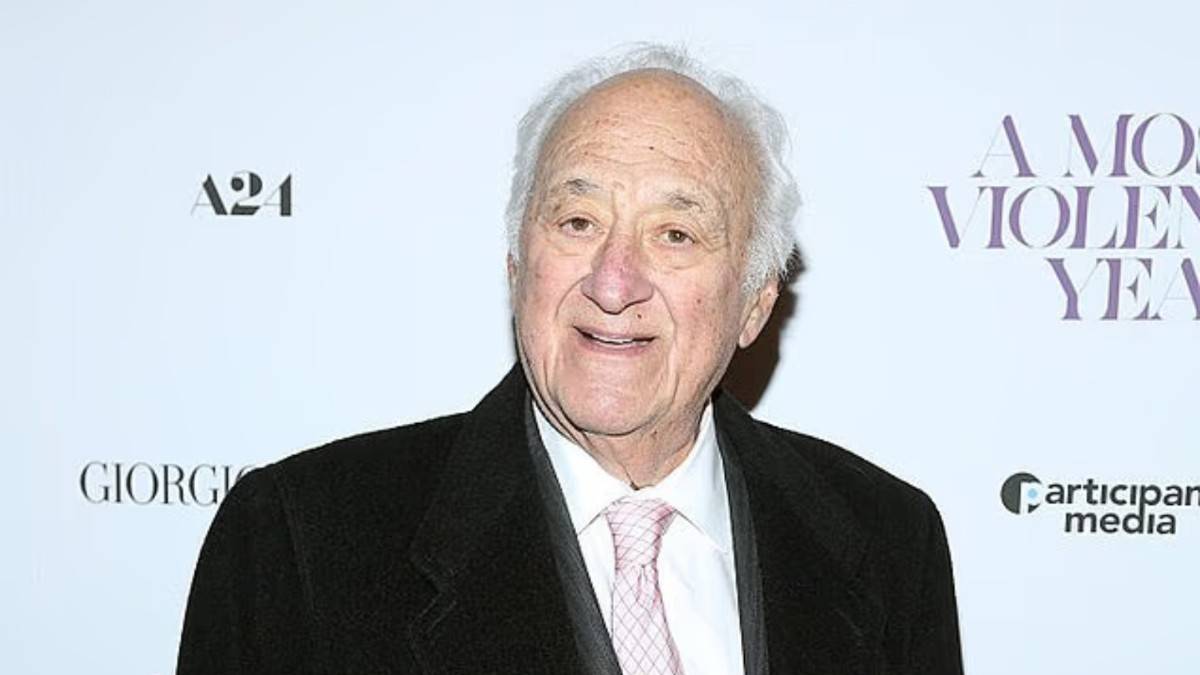
In a bold yet divisive move, the city has unveiled plans to reshape Coney Island with over 1,100 new homes, including more than 720 affordable and supportive units for low-income and homeless New Yorkers. While officials promise relief amid a deepening housing crisis, locals fear growing traffic chaos and rising flood threats. As the shimmering promise of revitalization meets the simmering doubts of longtime residents, the seaside stretch prepares to become a stage where dreams of affordable living may wrestle with the weight of real-world strain.
STORY HIGHLIGHTS
-
1,100 new homes planned, including 720+ affordable/supportive units
-
Targeted toward homeless and low-income New Yorkers
-
Announced during NYC primary early voting
-
Concerns over infrastructure, traffic congestion, and flood risk
-
Housing to rise near subway lines and over businesses
-
Average rent for some units: $1,800/month at 61% AMI
-
Additional units available at 30%–80% AMI
-
Over $750M invested in Coney Island since 2009 rezoning
-
$42M renovation planned for Abe Stark Sports Center
-
Casino project also under review nearby
As the housing crisis in New York City continues to deepen, Coney Island is poised to become a focal point of the city’s efforts to combat rising rent burdens and homelessness. A sweeping new development plan, recently unveiled by City Hall, aims to introduce 1,100 new residential units to the seaside neighborhood—of which more than 720 will be designated as affordable or supportive housing.
These homes, officials say, will serve some of the city’s most vulnerable populations, including unhoused New Yorkers, low-income families, and those in need of supportive services. The move is part of a broader push by the Adams administration to address housing insecurity and affordability, an effort city leaders claim is breaking records year after year.
Announced as early voting began for Tuesday’s primary election, the plan has been positioned as both timely and transformative.
“These homes will make sure that Coney Island is not only a great place for families to spend time together but also a great place to live,”
— Mayor Eric Adams said during the announcement.
He emphasized the administration’s continued momentum in building affordable housing across the five boroughs.
“We are setting affordable housing records, year after year,”
— he added.
Yet while the announcement has sparked cautious optimism, it has also stirred anxiety among longtime residents, many of whom welcome the concept of affordable housing but are worried about the broader impact on their community.
Kouichi Shirayanagi, a Coney Island resident, voiced concern about the limitations of the neighborhood’s infrastructure.
“Our peninsula is only three streets wide,”
— Shirayanagi explained.
“If you bring too much development to the area, you could disrupt traffic.”
He stressed that while the intention behind the housing projects might be good, their scale could create unintended complications for both residents and visitors.
Angela Kravtchenko, an architect and vice chair of the land use committee for Brooklyn Community Board 13, echoed those concerns, pointing to real-life consequences of traffic congestion—especially during busy seasons like summer holidays.
“People say, ‘Don’t get a heart attack on Fourth of July because it’ll take two hours for an ambulance to come to your house,’”
— she noted, reflecting widespread local anxieties.
The Coney Island expansion is not a standalone initiative but part of the larger “City of Yes” land-use reform effort spearheaded by the Adams administration. That broader vision seeks to eliminate zoning restrictions that have historically blocked housing construction in many parts of the city.
This includes areas like Mermaid Avenue and Coney Island Avenue, where new homes will now be allowed above commercial establishments and near subway hubs. The goal is to integrate housing more seamlessly into the urban fabric.
Among the developments breaking ground this year is Coney Island Phase III, a 420-unit project located at 1709 Surf Avenue. According to city estimates, the average rent for a one-bedroom in that development will be around $1,800 per month for individuals or families earning 61% of the area median income (AMI). For context, the AMI for a family of three in New York City is currently set at $145,800. Some apartments in the project will also be available to those earning as little as 30% and as much as 80% of the median.
Another project, Coney Landing, will rise at 2952 West 28th Street and include 108 units of supportive housing—targeted at individuals earning 30% of the AMI—along with 62 units designated for those earning up to 60%.
In total, a third major development between West 21st and West 22nd streets on Surf Avenue will add over 500 units to the housing stock. Twenty-five percent of these will be affordable. Officials said a developer for this site will be named later this summer, and pricing details are still pending.
Housing advocates have praised the projects as significant steps toward addressing Brooklyn’s shortage of affordable housing. With the city’s vacancy rate hovering at just 1.4%, experts say every new unit helps.
“These projects, once completed, will offer a wide range of affordable and attractive homes,”
— said Jeff Nemetsky, CEO of Brooklyn Community Housing and Services, a nonprofit that works with the homeless population.
“They will help low-income and working people remain in the community, while promoting healing and independence for those who had been unhoused.”
Nemetsky’s organization is not affiliated with the new Coney Island developments but supports the concept.
Still, not everyone is convinced the trade-offs are worth it. Kravtchenko, who has been active in neighborhood planning discussions, raised additional concerns—this time about the area’s ability to handle increased water runoff during storms and high tides.
“We have a sewer overflow,”
— she said.
“There is nowhere for water to run off, especially in the high tide. That’s a disaster.”
Environmental researchers from Hofstra University have also flagged Coney Island as increasingly vulnerable to flooding since a major 2009 rezoning. The risks have only escalated in the years since, as rising sea levels and stronger storms strain existing infrastructure.
Despite the risks, Shirayanagi believes the community cannot ignore the housing need.
“What I’ve experienced is a lot of people in my building leave New York City entirely,”
— he said.
“They go to New Jersey. They go somewhere else.”
He described most of his neighbors as middle-class New Yorkers—people who once saw Coney Island as an affordable haven, but who now find themselves priced out.
Meanwhile, the city continues to pour resources into the neighborhood. Since 2009, public investments totaling over $750 million have funded new streets, sewers, and thousands of homes. A new $42 million renovation is also planned for the Abe Stark Sports Center, adding to the area’s community infrastructure.
Separately, a proposed casino and entertainment complex is currently navigating the city’s review process, which may further transform the neighborhood’s identity and economy.
As Coney Island braces for change, residents and officials alike find themselves at the intersection of vision and vulnerability—a place where hope for housing meets the harsh realities of a strained and shifting landscape.
As Coney Island stands at the crossroads of transformation, the promise of affordable housing brings both opportunity and uncertainty. While the city’s vision aims to address urgent housing needs and uplift vulnerable communities, the concerns of local residents over congestion, flooding, and environmental strain cannot be overlooked. The unfolding developments mark a pivotal chapter for the iconic coastal neighborhood—where progress must strike a delicate balance with preservation. Whether this urban wave brings shelter or stress will depend not only on construction, but on thoughtful, inclusive planning in the heart of Brooklyn.
Appreciating your time:
We appreciate you taking the time to read our most recent article! We appreciate your opinions and would be delighted to hear them. We value your opinions as we work hard to make improvements and deliver material that you find interesting.
Post a Comment:
In the space provided for comments below, please share your ideas, opinions, and suggestions. We can better understand your interests thanks to your input, which also guarantees that the material we offer will appeal to you. Get in Direct Contact with Us: Please use our “Contact Us” form if you would like to speak with us or if you have any special questions. We are open to questions, collaborations, and, of course, criticism. To fill out our contact form, click this link.
Stay Connected:
Don’t miss out on future updates and articles










